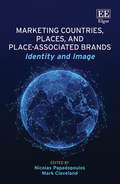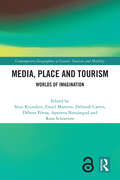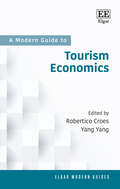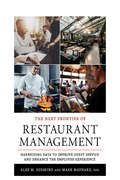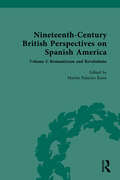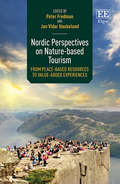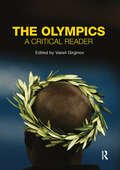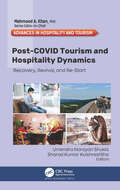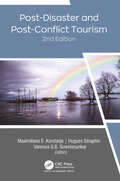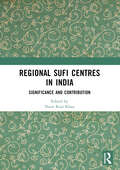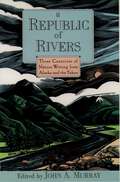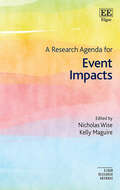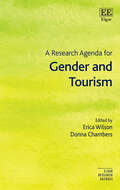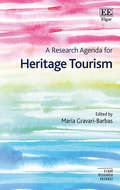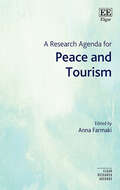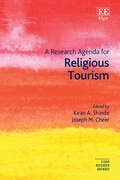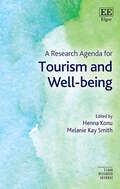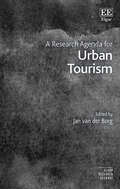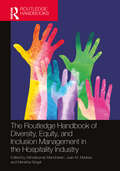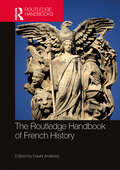- Table View
- List View
Lifeboat (UEB uncontracted)
The lifeboat is viewed from the side with its front or bow on the left of the page and the rear or stern on the right. There is a locator dot shown, which will be at the top left of the page when the image is the right way up. The lifeboat has two sections; the bottom section is the hull which would be in the water and the upper section is the cabin superstructure. Where these sections meet is the deck, which has handrails running along its entire length except for two gaps, one in the middle and one near the stern. These gaps are where the crew step aboard. In the middle of the cabin superstructure there are two rows of windows. The captain's bridge has one of its windows on the left of the upper row of five windows. Up from the windows is the boat's navigation light and then the lookout station. Two tall aerials stick up at the front and back of the lookout station, with the radar supported on two poles between them. Hand railings run to the right of the lookout station and down to the stern.
Lorry (Large Print)
This lorry is shown from the side. There is a locator dot shown, which will be at the top left of the page when the image is the right way up. The front of the lorry is on the left of the page, and the rear of the lorry is on the right. The driver's cab, at the front of the lorry, has a small bumper sticking out in the bottom. The cab is mainly taken up by a door, which has a window and a door handle. Behind the driver's cab is the large, enclosed trailer. In the middle, there is a long rectangular panel on which a company sign or advert can be displayed. Underneath the lorry three wheels are shown - one under the cab and the others under the trailer.
Marketing Countries, Places, and Place-associated Brands: Identity and Image
This book integrates new thinking on the image, marketing, and branding of places at all levels, from town squares to cities and countries, and of the products and peoples associated with them, thereby bridging the ‘country’ and ‘place’ silos in place-related research and practice. Insightful contributions from top scholars reflect fresh theorizing and provide a critical appraisal of conventional wisdom by juxtaposing intriguing contexts, questioning commonplace practices, and challenging methodologies and theoretical assumptions.Chapters explore interdependencies among residents, visitors, brand managers, and consumers; image effects of place and social identity, cross-border acquisitions, popular culture exports, and sporting mega-events; country-of-origin research, cross-cultural consumer behaviour, international marketing, destination branding, and brand modelling; and cutting-edge methodological approaches and managerial best practices in place marketing. The book’s interdisciplinary know-how and approach makes it an invaluable and comprehensive reference for researchers, managers, consultants, and students alike, in areas from marketing, place management, international business, and tourism to communications, social psychology, urban geography, and regional economics.
Media, Place and Tourism: Worlds of Imagination (ISSN)
Accessible and interdisciplinary in nature, this volume highlights the connections between media, tourism and place, bringing together the diverse perspectives, approaches and actors involved in critical issues relating to media tourism worldwide.This book explores new avenues, adopting a global and transnational perspective and placing emphasis on the exploration, analysis and comparison of cases from around the world. Encompassing chapters from a plethora of experts, the volume discusses processes and relationships of power involved in the development and experience of media tourism. This book seeks to broaden the horizons of both the reader and existing academic research into media tourism by including research into, among other topics, Bollywood and Nollywood films, Brazilian telenovelas and South Korean K-pop culture. Illustrated with tables and figures throughout, the volume presents insights from a variety of strands of cutting-edge and empirically rich research, which are collated, compared and contrasted to demonstrate the connections between media, tourism and place around the world.International in scope, this book is an ideal companion for academics and scholars within a wide array of disciplines, such as media studies, tourism studies, fan studies, cultural geography and sociology, as well as those with an interest in media tourism more specifically.The Open Access version of this book, available at www.taylorfrancis.com, has been made available under a Creative Commons Attribution-Non Commercial-No Derivatives (CC- BY- NC- ND) 4.0 license.
A Modern Guide to Tourism Economics (Elgar Modern Guides)
This Modern Guide captures the evolution of foundational tenets, theories, frameworks and models that buttressed tourism economics into an evolving discipline, shining light on both new and old approaches. It systematically examines current and future trends and issues related to new economic perspectives, consolidating the notion of tourism economics as a discipline.Chapters delve into the theoretical underpinnings of specific topics within the field, providing a range of examples of how to leverage economic theories to better understand, manage, and promote tourism activities to different stakeholders. Offering a kaleidoscope of economic perspectives, the Modern Guide looks at tourism economics from trade theory, choice theory, behavioural economics, public choice, institutional economics, environmental economics, developmental economics, cultural economics and more, with each chapter ending with insights into future research and directions.Written in an accessible style, this will be an invigorating read for hospitality and tourism management scholars, as well as tourism geographies, tourism marketing and sustainable tourism students. It will also be a useful tool for tourism economists and applied economists looking for a wide range of perspectives on the topic.
The Next Frontier of Restaurant Management: Harnessing Data to Improve Guest Service and Enhance the Employee Experience (Cornell Hospitality Management: Best Practices)
The Next Frontier of Restaurant Management brings together the latest research in hospitality studies to offer students, hospitality executives, and restaurant managers the best practices for restaurant success. Alex M. Susskind and Mark Maynard draw on their experiences as a hospitality educator and a restaurant industry leader, respectively, to guide readers through innovative articles that address specific aspects of restaurant management:* Creating and preserving a healthy company culture* Developing and upholding standards of service* Successfully navigating guest complaints to promote loyalty* Creating a desirable (and profitable) ambiance* Harnessing technology to improve guest and employee experiences* Mentoring employeesMaynard and Susskind detail the implementation of effective customer management and staff training, design elements such as seating and lighting, the innovative use of data to improve the guest experience, and both consumer-oriented and operation-based technologies. They conclude with a discussion of the human factor that is the foundation of the hospitality industry and the importance of a healthy workplace culture. As Susskind and Maynard show, successful restaurants don't happen by accident.
Nineteenth-Century British Perspectives on Spanish America: Volume I: Romanticism and Revolutions
The sources in this volume focus on Great Britain’s moral, financial, and diplomatic interventions and ambitions in Latin America. It begins during the wars of independence spanning 1810-1825, when Foreign Secretary George Canning prematurely declared, "Spanish America is free; and if we do not mismanage our affairs sadly, she is English." The independence movements of the former Spanish and Portuguese colonies, as well as their ancient past, inspired Romantic writers such as Anna Letitia Barbauld and spurred British military support and political debate, as attested by mercenary Richard Vowell’s Campaigns and Cruises in Venezuela and James Mill's "Emancipation of Spanish America."
Nordic Perspectives on Nature-based Tourism: From Place-based Resources to Value-added Experiences
Nature-based tourism (NBT) is a sector where entrepreneurial success is highly knowledge driven. This insightful book offers a comprehensive evaluation of NBT in a Nordic context, highlighting how long-established Nordic traditions of outdoor recreation practices can reveal lessons for the field more broadly. Featuring contributions from expert scholars, Nordic Perspectives on Nature-Based Tourism examines the links between place-based resources and value-added experiences. It considers the way in which NBT calls for an integrated approach to manage resources for both outdoor recreation and the development of commercial experience products. Chapters explore Nordic and international perspectives, local communities, market dynamics, firms, creativity, innovations and value-added experience products. Undergraduate and graduate students and scholars in tourism and related fields such as geography, planning, hospitality, outdoor recreation and natural resource management will find the knowledge and understanding gained from the book invaluable. It will also prove useful for policymakers, entrepreneurs and volunteers.
The Olympics: A Critical Reader
The Olympics: A Critical Reader represents a unique, critical guide to the definitive sporting mega-event and the wider phenomenon it represents – Olympism. Combining classic texts and thoughtful editorial discussion with challenging new pieces, including previously unseen material, the book systematically addresses the key questions in modern Olympism, including:what does studying Olympism entail?how do historical accounts create and challenge Olympic myths?how do different theoretical perspectives inform our understanding of Olympism?which socio-political processes influence personal, collective and imagined Olympic identities?how do we experience and make sense of Olympism?who owns Olympism and why does it matter?how do cities compete for and celebrate the Olympics?How are the Olympic values promoted?why is it important to protect the ethical principles and properties of Olympism?what are the grounds for contesting Olympism?how can Olympism be taught?how can the principles and practices of Olympism be sustained in the future?Each thematic part has been designed to include a range of views, including background treatment of an issue as well as critical scholarship, to ensure that students develop a well-rounded understanding of the Olympic phenomenon. The Olympics: A Critical Reader is essential reading for students of the Olympics and Olympism, the sociology of sport, sport management and cultural studies.
Passenger ship (Large Print)
This large passenger ship is shown from the side. There is a locator dot shown, which will be at the top left of the page when the image is the right way up. The front (bow) of the ship is on the left of the page, and the rear (stern) of the ship is on the right of the page. Along the bottom of the ship is the hull which has a row of porthole windows. Above the hull are the upper decks. There are two more rows of portholes, one for each deck. In the top left corner of the upper decks there is a window for the captain. Along the very top of the ship, there is a tall radio mast and to the right of this a big funnel with smoke coming out of the top.
Passenger ship (UEB Contracted)
This large passenger ship is shown from the side. There is a locator dot shown, which will be at the top left of the page when the image is the right way up. The front (bow) of the ship is on the left of the page, and the rear (stern) of the ship is on the right of the page. Along the bottom of the ship is the hull which has a row of porthole windows. Above the hull are the upper decks. There are two more rows of portholes, one for each deck. In the top left corner of the upper decks there is a window for the captain. Along the very top of the ship, there is a tall radio mast and to the right of this a big funnel with smoke coming out of the top.
Passenger ship (UEB uncontracted)
This large passenger ship is shown from the side. There is a locator dot shown, which will be at the top left of the page when the image is the right way up. The front (bow) of the ship is on the left of the page, and the rear (stern) of the ship is on the right of the page. Along the bottom of the ship is the hull which has a row of porthole windows. Above the hull are the upper decks. There are two more rows of portholes, one for each deck. In the top left corner of the upper decks there is a window for the captain. Along the very top of the ship, there is a tall radio mast and to the right of this a big funnel with smoke coming out of the top.
Post-COVID Tourism and Hospitality Dynamics: Recovery, Revival, and Re-Start (Advances in Hospitality and Tourism)
This new volume takes an in-depth look at the post-COVID tourism and hospitality scenario and how the industry has adapted to the new normal. With chapters from authors from over a dozen countries, the book shares information and experiences on how diverse hospitality and tourism sectors are navigating the post-COVID era. The book offers analyses of post-COVID trends in the travel, tourism, and hospitality sector along with case studies and COVID tourism recovery strategies. It discusses post-COVID safety protocols, sustainable tourism practices, post-COVID-19 public policies for tourism, and more. Specific tourism and hospitality sectors are also considered, including wine tourism, MICE (meetings, incentives, conferences, and exhibitions) tourism, regional tourism, food delivery services, and others. The book also explores innovations and digital solutions for tourism and hospitality in the COVID-19 pandemic.
Post-Disaster and Post-Conflict Tourism, 2nd Edition
This new volume, Post-Disaster and Post-Conflict Tourism, now going into its 2nd edition, takes an in-depth look at how global geopolitical tensions and global threats affect the tourism industry and offers tools and strategies for meeting these challenges. The book is updated with chapters that include new research, studies, and experiences, many of which consider the fall-out from the COVID-19 pandemic on tourism. It also includes five brand new chapters, for over 50 new pages of text. With chapters by well-versed scholars who have worked as experts in post-disaster and post-conflict tourism, the book presents a host of case scenarios along with innovative strategies that can be implemented by postcolonial, post-conflict, and post-disaster destinations to encourage travel and tourism in these areas. Topics include using tourism as a vehicle for economic recovery, educating tourists at the pre-visit stage, developing and employing postcolonial branding and self-branding, using sports tourism and food events as a marketing strategy, the ethics revolving around post-disaster consumption, and much more. The new chapters discuss tourism in the age of the coronavirus pandemic and its dramatic disruptive effect on the tourism industry. The authors delve into post-COVID tourism marketing, health and wellness education and practices, ethical considerations for tourism operators, and more. A chapter also considers the challenges of sustainable supply chain management in tour operations. With contributions from experts in this emerging field, this volume is a rich resource for travel and tourism professionals, policymakers, researchers, and others. It creates a bridge between the conceptual discussions around "dark consumption" (tourism directed to places that are identified with death and suffering) and the urgency to develop empirical models that support destination marketing organizations in a rapidly changing world.
Regional Sufi Centres in India: Significance and Contribution
Regional Sufi Centres in India: Significance and Contribution sets out to explore and understand the hundreds of years old multi-religious sect of India, "Sufism," which advocates humane and global outlook for entire mankind and regards humanity as a brotherhood. Sufism came to India from its Arabic Turkic and Persian homes, instead of remaining confined to palaces and mosques. It spread out to all over India establishing regional Centres and Dargahs often known by the surnames of the families which sustained it, like Khanqah-e-Niazia, in Bareilly (UP), Khanqah Gesu Daraz in Gulbarga, and Firdausi in Bihar. The authors of this volume discuss some of the regional Sufi Centres in India and their contribution in the social emancipation of the society. Print edition not for sale in South Asia (India, Sri Lanka, Nepal, Bangladesh, Pakistan and Bhutan)
A Republic of Rivers: Three Centuries of Nature Writing from Alaska and the Yukon
"The spell of Alaska," Ella Higginson wrote in 1908, "falls upon every lover of beauty who has voyaged along those far northern snow-pearled shores...or who has drifted down the mighty rivers of the interior which flow, bell-toned and lonely, to the sea....No writer has ever described Alaska; no one writer ever will; but each must do his share, according to the spell that the country casts upon him." In A Republic of Rivers, John Murray offers the first comprehensive anthology of nature writing in Alaska and the Yukon, ranging from 1741 to the present. Many of the writers found here are major figures--John Muir, Jack London, Annie Dillard, Barry Lopez, and Edward Abbey--but we also discover the voices of missionaries, explorers, mountain-climbers, Native Americans, miners, scientists, backpackers, and fishermen, each trying to capture something of the beauty of this still pristine land, to render in their own words the spell that the country casts upon them. The range of viewpoints is remarkable. With Annie Dillard we look out at ice floes near the remote Barter Island and see "what newborn babies must see: nothing but senseless variations of light on the retinas." With Frederick Litke we mourn the senseless slaughter of sea mammals. We join scientist Adolph Murie, the father of wolf ecology, as he probes the daily life of an East Fork wolf pack. And we listen as Tlingit Indian Johnny Jack relates the difficulty of maintaining a dignified life close to nature at a time of cultural upheaval for his people. Most of these selections have never appeared in any anthology and some entries--particularly those written by early American and Russian explorers--have never been available to general readers. There is laughter here and there is sorrow, but finally there is communion and liberation as generation after generation encounter the unsurpassed beauty and wildness of the Arctic. Taken together, these forty-nine men and women provide a unique portrait of America's final frontier.
A Research Agenda for Event Impacts (Elgar Research Agendas)
Elgar Research Agendas outline the future of research in a given area. Leading scholars are given the space to explore their subject in provocative ways, and map out the potential directions of travel. They are relevant but also visionary.Exploring the social, economic and environmental impacts of events on people, places and communities, this timely Research Agenda highlights the links between theory and practice in event impacts research. Top scholars critically assess events, looking at who benefits from hosting them, and focusing on issues surrounding sustainability, the need to define legacies, and the need to extend regeneration efforts to secure economic and socially sustainable futures.The Research Agenda first outlines key theories and concepts in the field, addressing the three impacts recognized in triple bottom line considerations of sustainability. Chapters then move to analyse a range of types and scales of event, including: conventions and business events, sports tourism, cultural and religious events, intangible cultural heritage, and events in rural locations. This forward-looking Research Agenda further analyses event hosting in emerging economy nations, disability access and inclusion, climate change and the impact of the Covid-19 pandemic.Covering a broad range of types, scales and settings of events, this will be a crucial read for event studies and event management scholars. The critical insights to practical impacts of events will also be beneficial for policy-makers and event practitioners.
A Research Agenda for Gender and Tourism (Elgar Research Agendas)
Elgar Research Agendas outline the future of research in a given area. Leading scholars are given the space to explore their subject in provocative ways, and map out the potential directions of travel. They are relevant but also visionary. Forward-looking and innovative, Elgar Research Agendas are an essential resource for PhD students, scholars and anybody who wants to be at the forefront of research.Original and thought-provoking, this Research Agenda investigates the many ways in which tourism is gendered. It outlines current thought and directions for future research, looking forward by imagining and challenging the ways that gender will continue to intersect with and impact on tourism, as well as looking back to trace the key developments and contributions in gendered thinking.Chapters consider and rethink gender in the context of tourism from multiple vantage points, contexts and perspectives. Divided into three parts, the Research Agenda reflects key threads in a contemporary research agenda: gender theory, analysis and review; gender, tourism and work; and gendered tourism experiences. Bringing together a range of diverse and inclusive contributions, it moves beyond binary assumptions of ‘women’ and ‘men’ towards the intersectionalities among gender, race, class, sexuality and power in relation to tourism.Highlighting emerging research in the field, along with the methods and paradigms that are at the forefront of gendered tourism research, this Research Agenda will be an invigorating read for critical tourism researchers as well as gender researchers and those in the social sciences more broadly.
A Research Agenda for Heritage Tourism (Elgar Research Agendas)
Elgar Research Agendas outline the future of research in a given area. Leading scholars are given the space to explore their subject in provocative ways, and map out the potential directions of travel. They are relevant but also visionary. This timely Research Agenda moves beyond classic approaches that consider the relationship between heritage and tourism either as problematic or as a factor for local development, and instead adopts an understanding of heritage and tourism as two reciprocally supported social phenomena that are co-produced. Chapters draw on case studies from Europe, North America and Asia, offering important insights on heritage consumption, hypercommodification, war tourism, dissonant heritage, decolonizing heritage and the rising importance of the digital world of tourism. The book commences with a global overview on the changing paradigm of heritage tourism, before focusing on heritage and tourism at different scales and the impacts of globalization on heritagization. It also examines the political nature of tourism heritage construction and the experiential turn of heritage tourism practices. An invigorating read for students and scholars of tourism and heritage studies, this book offers a multitude of suggestions for pathways for future research. It is also a timely read for those working with heritage sites and looking to better understand the intersection between heritage and tourism.
A Research Agenda for Peace and Tourism (Elgar Research Agendas)
Elgar Research Agendas outline the future of research in a given area. Leading scholars are given the space to explore their subject in provocative ways, and map out the potential directions of travel. They are relevant but also visionary.This highly prescient Research Agenda critically examines the delicate intersection of peace and tourism and proposes further research in order to explore how tourism may contribute to peace or, conversely, hinder the peacebuilding efforts of destinations in conflict.Anna Farmaki brings together a wealth of expertise from scholars who present the peace and tourism nexus from a variety of different perspectives, using both empirical evidence and conceptual research to support cases. Chapters discuss tourism as a peace-builder, the acceptance of dark tourism, a gender approach to peace through tourism, and corporate social responsibility as a contributor to peace in conflict-ridden situations. This innovative and forward-thinking Research Agenda provides a vital contribution to this burgeoning area of research, carrying implications for local communities, tourist destinations and wider society at large in conjunction with the UN’s 2030 Sustainable Development Agenda.Providing a much-needed re-examination of the connection between peace and tourism, this book will prove essential reading for students, academics and researchers interested in human geography, political geography and geopolitics, tourism management and business and management. Considering many practical outcomes of tourism policy, this book will also benefit professionals working in tourism, foreign policy, public policy and international relations.
A Research Agenda for Religious Tourism (Elgar Research Agendas)
Elgar Research Agendas outline the future of research in a given area. Leading scholars are given the space to explore their subject in provocative ways, and map out the potential directions of travel. They are relevant but also visionary.Incisive and interdisciplinary, this Research Agenda broaches topics that have been under-researched within religious tourism, including: place attachment and marketing; memory and modification of sacred landscapes for tourism needs; the darker sides of religious tourism; multi-stakeholder governance; mission-trips; and allied forms of tourism.With contributions from top scholars, the book includes cases from across Europe and Asia, exploring pilgrimage sacred landscapes for different religions. Building on emerging themes including the importance of governance, conflicts associated with pilgrimage and religious tourism, gender and gendered dimensions, resilience in the wake of the recent pandemic, and newer ways of performing religious tourism such as virtual reality, it sets a research agenda for future inquiry.This thought-provoking Research Agenda will be a valuable resource for scholars of tourism, human geography, heritage studies, anthropology, and religious studies.
A Research Agenda for Tourism and Wellbeing (Elgar Research Agendas)
Elgar Research Agendas outline the future of research in a given area. Leading scholars are given the space to explore their subject in provocative ways, and map out the potential directions of travel. They are relevant but also visionary.Interdisciplinary and multidimensional in its approach, this insightful Research Agenda critically analyses the principal issues that have emerged in recent years from tourism and wellbeing studies. It provides a detailed analysis of definitions and key concepts and explores the research agenda related to product and service development, motivation, segmentation and management using established as well as experimental methodologies.Enlightening contributions from leading scholars detail the role, indicators, and measurement of wellbeing in tourism economics, expertly examining issues of individual wellbeing and how experiences of wellbeing can be facilitated for both employees and tourists. The various impacts of tourism on wellbeing are analysed from a diverse range of perspectives, including collective experiences of social and diasporic tourism and individual experiences of wellbeing and transformation.Succinct and cutting-edge, A Research Agenda for Tourism and Wellbeing will appeal to students, academics, and researchers in tourism, sociology, economics, business, psychology, and human geography. It will also prove insightful to practitioners involved in product and service development, tourism and destination, marketing and human resources management sectors.
A Research Agenda for Urban Tourism (Elgar Research Agendas)
Elgar Research Agendas outline the future of research in a given area. Leading scholars are given the space to explore their subject in provocative ways, and map out the potential directions of travel. They are relevant but also visionary.This timely Research Agenda explores and proposes critical lines of research to support understanding of the conditions under which urban tourism contributes to the development of urban systems, and what can be done to create and conserve these conditions. Chapters highlight conceptual discussions, concrete case studies and policy reviews to address the issues surrounding the economic, environmental and social impacts of tourism on cities.Analysing the trends that have characterized urban tourism in the past, the Research Agenda looks ahead to those that may influence it in the future, including the impact of Covid-19. Chapters further offer a thorough conceptualization and innovative definitions of the phenomenon of urban tourism. The critical issue of the sustainability of tourism development in cities is also discussed in depth.The Research Agenda provides a comprehensive and up-to-date overview of the urban tourism debate, making it a critical read for urban studies and tourism scholars. The detailed case studies from across four continents will also be beneficial to policymakers and urban planners dealing with tourism development.
The Routledge Handbook of Diversity, Equity, and Inclusion Management in the Hospitality Industry
Interdisciplinary in terms of both its coverage and contributions, The Routledge Handbook of Diversity, Equity, and Inclusion Management in the Hospitality Industry provides an informative and systematic guide to the current state of knowledge on workforce diversity and its management. Providing empirical knowledge and reflective practice on diversity issues and their management in the hospitality industry, this handbook includes chapters written by a plethora of experts in the diversity management (DM) field, including scholars, academics, and industry experts, such as managers from leading hospitality industry firms. Logically structured and embellished with illustrative figures throughout, the volume provides critical reviews and an appraisal of current research and the future development of conceptual and theoretical approaches to diversity, equity, and inclusion (DEI) management in the hospitality industry, including dimensions of diversity in hospitality, such as gender, cultural/ethnic, age, disability, sexual orientation, and Indigenous workers. Elucidative examples are used from different countries such as Australia, Austria, Canada, Japan, United Arab Emirates, and India, and the volume takes a solution-based approach, providing future directions for emerging diversity researchers. Global in perspective, this book is a pivotal teaching resource for academics, an illustrative reference resource for Ph.D. students and early career researchers who work on workforce diversity and a practical guide for managers and HR consultants. It will also appeal to wider audiences, including those in tourism, recreation and leisure studies, and other professional fields.
The Routledge Handbook of French History
Aimed firmly at the student reader, this handbook offers an overview of the full range of the history of France, from the origins of the concept of post-Roman "Francia," through the emergence of a consolidated French monarchy and the development of both nation-state and global empire into the modern era, forward to the current complexities of a modern republic integrated into the European Union and struggling with the global legacies of its past.Short, incisive contributions by a wide range of expert scholars offer both a spine of chronological overviews and a diverse spectrum of up-to-date insights into areas of key interest to historians today. From the ravages of the Vikings to the role of gastronomy in the definition of French culture, from Caribbean slavery to the place of Algerians in present-day France, from the role of French queens in medieval diplomacy to the youth-culture explosion of the 1960s and the explosions of France’s nuclear weapons program, this handbook provides accessible summaries and selected further reading to explore any and all of these issues further, in the classroom and beyond.

